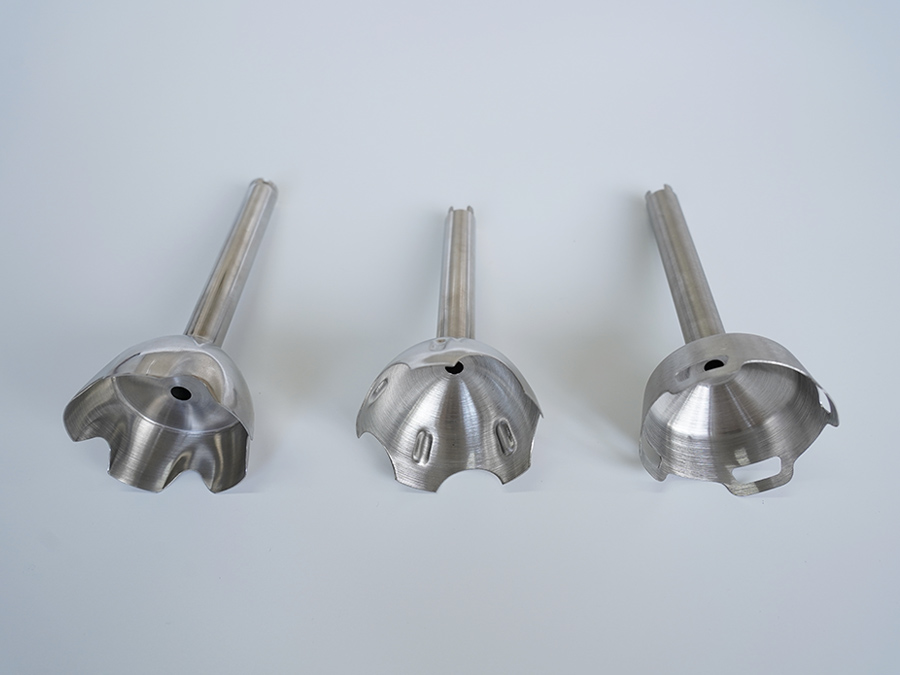
 Home > News
> News Information
Home > News
> News Information
In the processing industry, stretch parts are a common type of machined component. There are many types of stretching, and different materials in different industries correspond to different parts, such as pull rod hardware. Drawn hardware refers to parts processed from steel or some non-ferrous metals, with processing methods including cold and hot stamping, extrusion, rolling, welding, cutting, and other processes, and has a relatively broad definition. So, inHardware stretching partsWhat is the role of rebound ability in the processing and forming process?
In general, metal stretching parts are widely used in various fields, including electronic devices, automotive parts, decorative materials, etc. The production process of all hardware stretching parts is: a multi station progressive continuous punching mold that performs punching on the workpiece of the nail arranging machine, thereby completing processes such as rolling forming and welding. However, there is still a small point inside that is connected to the stamping plate material. After stamping and welding, the workpiece is processed with stamping plate and used for special waveform surface treatment equipment, rust proof grease, and welding slag. Complete the welding and edge welding work in the shot blasting workshop.
Electromagnetic forming of metal and metal stretching parts is a forming process. Forming can not only expand the forming range of aluminum alloys, but also improve the forming performance of aluminum alloys. The specific method of using composite stamping to form aluminum alloy covers is to install electromagnetic coils into the sharp corners and difficult to form contours of the aluminum alloy cover. Adopting electromagnetic method for molding, then forming a pair of molds on a press machine, and then using electromagnetic coils for deformation.
The results indicate that this composite forming method can obtain aluminum alloy panels that are difficult to obtain with a single stamping method. The present invention can also be applied to the connection of metal stretching parts in punching machines and the composite forming of various products. This method can be used for stamping and forming many difficult to form materials, such as magnesium alloys and titanium alloys. Because punching requires the punch to stop during the descent process to ensure the heating time of the material, the CNC crankshaft servo motor punch can also achieve punching in the punching die. The composite processing, including tapping, riveting and other processes, effectively expands the scope of punching processing and lays a solid foundation for the promotion and application of magnesium alloys in the plastic processing industry.

The rebound effect during the forming process of metal stretching parts
1. The thickness of stamping materials: The thickness of the sheet has a significant impact on the bending performance during the forming process. The thicker the plate, the smaller the rebound phenomenon. The reason is that as the plate thickness increases, the more plastic deformation material there is, the greater the elastic recovery deformation, and the smaller the rebound. With the continuous improvement of the strength of thick plate materials, the problem of dimensional accuracy of parts has become increasingly prominent. Mold design and later process debugging require a certain understanding of the nature and size of springback in order to take corresponding countermeasures and remedial measures.
2. Mold drawstring: A type of mold drawstring widely used in today's technology. Correctly setting the stretching position can change the direction of material flow and distribute resistance on the surface of the material. Therefore, to improve the formability of materials, stretching ribs should be installed on parts that are prone to rebound, so that the more fully formed parts have a more uniform stress distribution and smaller rebound.
3. Mechanical properties of stamping materials: There are metal stamping parts of different strengths on automobiles. The yield strength of different plates varies from ordinary steel plates to steel plates. The higher the yield strength of the board, the easier it is to rebound. This is the DP series duplex high-strength steel.
4. Demoulding and punching pressure: The edge forming of the stripping plate is an important process measure. By continuously optimizing the edge pressure, the flow direction of the material can be adjusted and the stress distribution of the material can be improved. Increasing the edge pressure can make the stretching of the part more complete, especially if the formation of the side wall and R angle of the part is sufficient, the internal stress difference will be reduced, and the rebound will also be reduced.
5. The shape and complexity of stamped parts: Parts with different shapes vary greatly. Complex shaped parts are usually formed in one go to prevent springback due to inadequate molding. In addition, some special shaped parts are more prone to rebound, such as U-shaped parts, and the issue of rebound compensation should be considered when analyzing the forming process.
The above is the relevant content about the processing of metal stretching parts. The production and processing of high-quality stretching parts should use high-quality metal or non-metal sheets; Secondly, the material surface will not be damaged during the stamping process; In addition, products produced and processed through stretching have good dimensional accuracy. Only the above three points can be considered as high-quality production and processing products of stretch parts.


.jpg)






